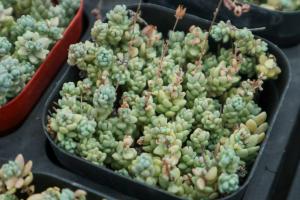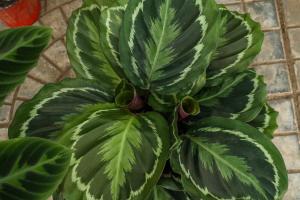Can You Put Rocks on Top of Potted Plants?
Many gardeners use decorative rocks to enhance the appearance of their potted plants. However, there is much debate on whether or not it is actually beneficial for the plants. In this article, we will explore the pros and cons of putting rocks on top of potted plants and how it can affect their growth and well-being.
The Pros of Putting Rocks on Top of Potted Plants
One of the main reasons to put rocks on top of potted plants is that it can improve the aesthetics of the plant. Not only do rocks provide a decorative effect, but they can also add weight to the pot, ensuring that it doesn't tip over easily.
In addition, rocks can help to retain moisture in the soil. The water in the soil will evaporate slower when it is covered with rocks, which is particularly helpful for plants that don't require frequent watering. Moreover, the rocks can help to prevent soil erosion and the runoff of water from the pot.
The Cons of Putting Rocks on Top of Potted Plants
One of the main disadvantages of using rocks on top of potted plants is that they can reduce the amount of air that gets to the plant's roots. Rocks can create a thick layer that prevents air from reaching the soil, leading to a lack of oxygen for the roots. This can ultimately hinder the plant's growth and eventually cause it to wither and die.
Moreover, rocks can also encourage the growth of harmful bacteria, algae, and pests. The layer of rocks can trap moisture and promote the growth of these organisms, which can damage the plant's roots and overall health.
Alternative to Using Rocks on Top of Potted Plants
If you are looking for an alternative to using rocks on top of potted plants, there are several options available. You can use mulch, which can help retain moisture and insulate the soil while still allowing air to circulate to the roots.
Another option is to use an organic top layer, such as peat moss, shredded bark, or coconut coir. These materials will perform similar functions as rocks, but they will also provide more nutrients for the soil and roots. Organic top layers also decompose over time, adding valuable organic matter to the soil which can improve the soil's water-holding capacity and fertility.
Conclusion
In conclusion, using rocks on top of potted plants can have its benefits but also its drawbacks. While it can improve the appearance of the plants and help retain moisture in the soil, it can also hinder the growth of the roots and promote the growth of harmful organisms. If you decide to use rocks, it is important to ensure that they do not create a layer that prevents air from reaching the roots. Alternatively, you can consider using mulch or organic top layers to improve the plant's health and vitality.

 how many times do yo...
how many times do yo... how many planted tre...
how many planted tre... how many pine trees ...
how many pine trees ... how many pecan trees...
how many pecan trees... how many plants comp...
how many plants comp... how many plants can ...
how many plants can ... how many plants and ...
how many plants and ... how many pepper plan...
how many pepper plan...
































